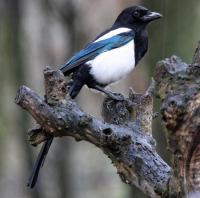- Home
- FAQs
- Customer Video Gallery
- Customer Photo Gallery
- Bird Facts
- Bird Food Blog
- Bird Information
- Feeding Advice
- Small Animal Information
- A to Z of Guinea Pigs
- A to Z of Hamsters
- A to Z of Rabbits
- Basic Care for Guinea Pigs
- Basic Care for Hamsters
- Basic Care for Rabbits
- Basic care for Chinchillas
- Basic care for Ferrets
- Basic care for Gerbils
- Basic care for Mice
- Basic care for Rats
- Buying a Healthy Small Animal
- Does your Reptile need a Licence
- Equipment for Ferrets
- Equipment for Hamsters
- Equipment for Mice
- Equipment for your Chinchilla
- Equipment for your Gerbil
- Equipment for your Guinea Pig
- Equipment for your Rabbit
- Keeping a House Rabbit
- Dog Information
- Cat Information
- Customer Information
- Fat Balls
- Suet Pellets
- Straights
- Seed Mixes
- Suet Treats
- Mealworms
- Bird Feeders
- My Account

| Scientific Name | Corvus corone |
| Breeding | April |
| Fledge Days | 29-30 |
| Incubation Days | 18-20 |
| Lifespan | 4 years |
| Number of Clutches | 1 |
| Number of Eggs | 3-4 |
| Size | 46cm |
| Weight | 510g |
| Wingspan | 98cm |
Bird Family : Crows and Allies
Carrion Crow Facts - Information About Carrion Crow
Carrion Crow - Corvus Corone
The Carrion Crow has adapted itself to all habitats in the UK, in recent years it has been split into two species. The Hooded Crow is the Carrion Crows counterpart in North West Scotland and the whole of Ireland, it has a two toned plumage, quite unlike the solid black plumage of the Carrion Crow. The Carrion Crow is an intelligent bird, this has no doubt helped in the birds wide distribution in different habitat types.
Identification:
Adults
- A typical Crow adult male and female are alike, juveniles also similar in plumage.
- The adult is the only fully black (black-billed) medium sized (48cm) Crow of the region.
- Entire upper and underparts are black, glossed bluey green when fresh.
- The black bill is thick and blunt.
- The only other large fully black Crows of the region are the Raven, which is considerably bigger (62cm) and has a wedge shaped tail and the Rook which in adult plumage has a pale base to the bill.
- In flight the Carrion Crow shows broad wings and a slightly rounded tail.
The biggest confusion lies with young Rook where good views and careful separation is needed.
The pointers for separation are:
- With Rook the bill is longer, thinner and considerably more pointed.
- The crown in often peaked, nicely rounded in Carrion Crow.
- In flight the tail is more rounded.
- In flight the wings are not as broad and appear pinched in close to the body.
- The Rook is slightly smaller and generally not as sleek looking as Carrion Crow.
- Bill, legs and eyes are black.
- Be careful!
Juveniles
- Juveniles appear from April onwards and once fledged look identical to adults.
- Bill and eyes are black, legs are slightly paler.
Status and Distribution
The Carrion Crow is abundant throughout all habitat types in the UK. It is a breeding resident in the UK with around 800,000 pairs. The Carrion Crow occurs in all counties throughout the UK however in North West Scotland and all of Ireland it is replaced by the Hooded Crow, Corvus Cornix, which was considered the same species until 2002 (plumage two tone, grey and black).
Habitat / Food
Carrion Crows occur in all habitat types throughout the UK, cities, towns, woodlands, parks, gardens, farmland, hedgerows, coast, mountains etc.
They nest independently unlike Rooks that nest communally in large groups called Rookeries.
The Carrion Crow is very adaptable and will eat anything from crabs on the coast to kitchen scraps, birds eggs, fruit, seed mixes and insects.
Song / Call
Call is a harsh croaking ‘Crraa crraa crraa’ repeated 3 or 4 times with rolling ‘R’s.










